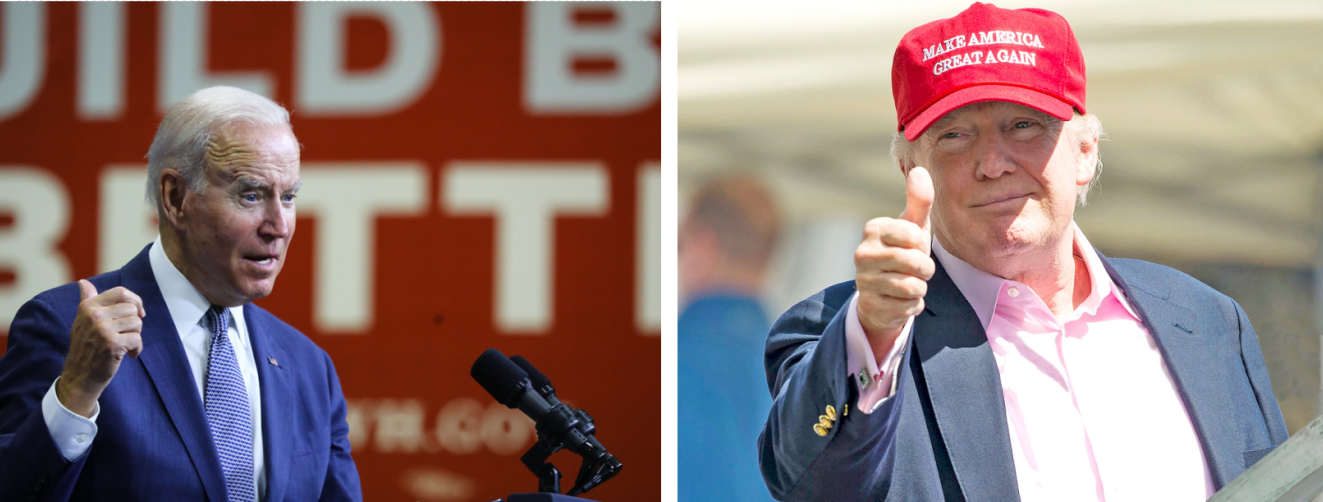As the 2024 Presidential Election approaches in the United States, the anticipation rises for yet another captivating chapter in the country's political narrative. While the national vote captures attention, the battleground states possess the crucial elements to secure the White House, often making a decisive impact on the Electoral College system. In examining the electoral terrain, we investigate six pivotal states positioned to influence the upcoming election's outcome. Drawing on historical voting patterns and current assessments, we analyze the changing dynamics of these states—Arizona, Wisconsin, Georgia, Pennsylvania, Michigan, and Nevada and the diverse factors contributing to their status as electoral battlegrounds.
These states reflect the geographic variety and serve as a microcosm of America's sociopolitical fabric, where shifts in demographics, economic issues, and voter behavior mobilization converge to shape the landscape of political influence. Through this perspective, our goal is to unravel the intricacies of contemporary American politics and predict the potential paths that the presidential race may take.
Arizona
Once a reliably Republican stronghold, Arizona has emerged as an actual swing state in recent elections. In 2016, Donald Trump secured Arizona with 1,252,401 votes, representing 48.7% of the total, while Hillary Clinton received 1,161,167 votes, representing 47.7%. Trump's victory margin was 91,234 votes.
In 2020, Biden flipped Arizona with 1,672,143 votes, representing 49.4% of the total, while Trump received 1,661,686 votes, representing 49.1%. Biden's victory margin was 10,457 votes.
Factors contributing to competitiveness:
- Rapid population growth: Arizona is one of the fastest-growing states in the nation, attracting a significant influx of young professionals and minorities who tend to lean Democratic.
- Growing Hispanic population: Hispanics constitute a substantial and rapidly growing demographic in Arizona, and their voting bloc is increasingly crucial in close elections. In 2020, over 60% of Hispanic voters in Arizona voted for Biden.
Wisconsin
Traditionally a Democratic stronghold, Wisconsin was won by Donald Trump in 2016 with 1,405,284 votes, representing 47.2% of the total, while Hillary Clinton received 1,382,536 votes, representing 46.5%. Trump's victory margin was 22,748 votes.
In 2020, Joe Biden secured Wisconsin with 1,630,866 votes, representing 49.5% of the total, while Donald Trump received 1,610,184 votes, representing 48.8%. Biden's victory margin was 20,682 votes.
Factors contributing to competitiveness:
- Independent voters: A significant portion of Wisconsin voters identify as independents, making them susceptible to persuasion by both parties' candidates and further intensifying the competition.
- Economic issues: The state's manufacturing sector has declined in recent years, impacting blue-collar jobs and potentially influencing voters' economic anxieties, which both parties will likely address in their campaigns.
Georgia
Once a reliably Republican state, Georgia favored Donald Trump in the 2016 presidential election. Trump secured victory with 2,089,104 votes, representing 50.4% of the total votes cast. The Democratic candidate, Hillary Clinton, garnered 1,877,963 votes, accounting for 45.6% of the total. Trump's victory margin in Georgia was 211,141 votes.
In the 2020 presidential election, Georgia witnessed a historic shift as the Democratic candidate, Joe Biden, narrowly won the state, marking the first time a Democratic presidential candidate had carried Georgia since 1992. Biden secured victory with 2,474,507 votes, representing 49.5% of the total votes cast, while the Republican incumbent, Donald Trump, received 2,461,837 votes, accounting for 49.3% of the total. Biden's victory margin in Georgia was 12,670 votes.
Factors contributing to competitiveness:
- Mobilization of the Black electorate: Black voters make up a significant portion of Georgia's electorate, and their high turnout and overwhelming support for Democratic candidates play a crucial role in close elections.
- Suburban growth: The suburbs around Atlanta have seen a surge in population, attracting new residents who may not align with the traditional Republican base in rural areas.
Pennsylvania
Pennsylvania is a perennial battleground state with immense electoral weight due to its 20 electoral votes. In 2016, Donald Trump won Pennsylvania with 2,970,733 votes, representing 48.2% of the total, while Hillary Clinton received 2,926,441 votes, representing 47.6%. Trump's victory margin was 44,292 votes.
In 2020, Joe Biden secured Pennsylvania with 3,458,229 votes, representing 50.0% of the total, while Donald Trump received 3,377,671 votes, representing 48.8%. Biden's victory margin was 80,558 votes.
Factors contributing to competitiveness:
- Working-class voters: Pennsylvania has a large working-class population, particularly in the western and northeastern parts of the state. Both parties will likely focus on their economic messages and policies to appeal to this crucial demographic.
- Suburban swing: Similar to Georgia, the suburbs of Philadelphia and Pittsburgh have seen demographic shifts, which could impact voting patterns in these areas.
Michigan
Another historically Democratic-leaning state, Michigan, flipped to Republicans in 2016; Donald Trump won Michigan with 2,279,543 votes, representing 47.5% of the total, while Hillary Clinton received 2,268,839 votes, representing 47.3%. Trump's victory margin was 10,704 votes.
In 2020, Biden secured Michigan with 2,804,040 votes, representing 50.6% of the total, while Trump received 2,649,853 votes, representing 47.8%. Biden's victory margin was 154,187 votes.
Factors contributing to competitiveness:
- Manufacturing jobs: The decline of manufacturing jobs in Michigan has been a significant concern for voters, and both parties will likely address this issue in their campaigns, aiming to appeal to blue-collar workers.
- Independent voters: Similar
Nevada
Once a Republican stronghold, Nevada has become a critical battleground state. In 2016, Hillary Clinton won Nevada with 539,260 votes, representing 47.9% of the total, while Donald Trump received 512,058 votes, representing 45.5%. Clinton's victory margin was 27,202 votes.
In 2020, Biden secured Nevada with 703,486 votes, representing 50.1% of the total, while Trump received 669,890 votes, representing 47.7%. Biden's victory margin was 33,596 votes.
Factors contributing to competitiveness:
- Demographic Diversity: Nevada boasts a diverse population, including significant Hispanic, Asian American, and Pacific Islander communities, shaping its political landscape.
- Urban-Rural Divide: Contrasting urban centers like Las Vegas and Reno with rural regions influences electoral outcomes and requires tailored campaign strategies.
- Economic Considerations: Nevada's economy, reliant on tourism and hospitality, faces unique challenges, demanding attention to financial recovery and healthcare access.
In the lead-up to the 2024 presidential election, attention is focused on several pivotal battleground states, including Arizona, Wisconsin, Georgia, Pennsylvania, Michigan, and Nevada. These states, characterized by shifting demographics, economic concerns, and political complexities, represent the frontline of American democracy.
The presidential race's outcome will be determined by the nuances of these key states, where every vote counts, and candidates must tailor their messages to resonate with diverse constituencies. As the nation navigates the electoral landscape, the collective verdict of these battlegrounds will shape the future trajectory of American politics.

.jpeg)


